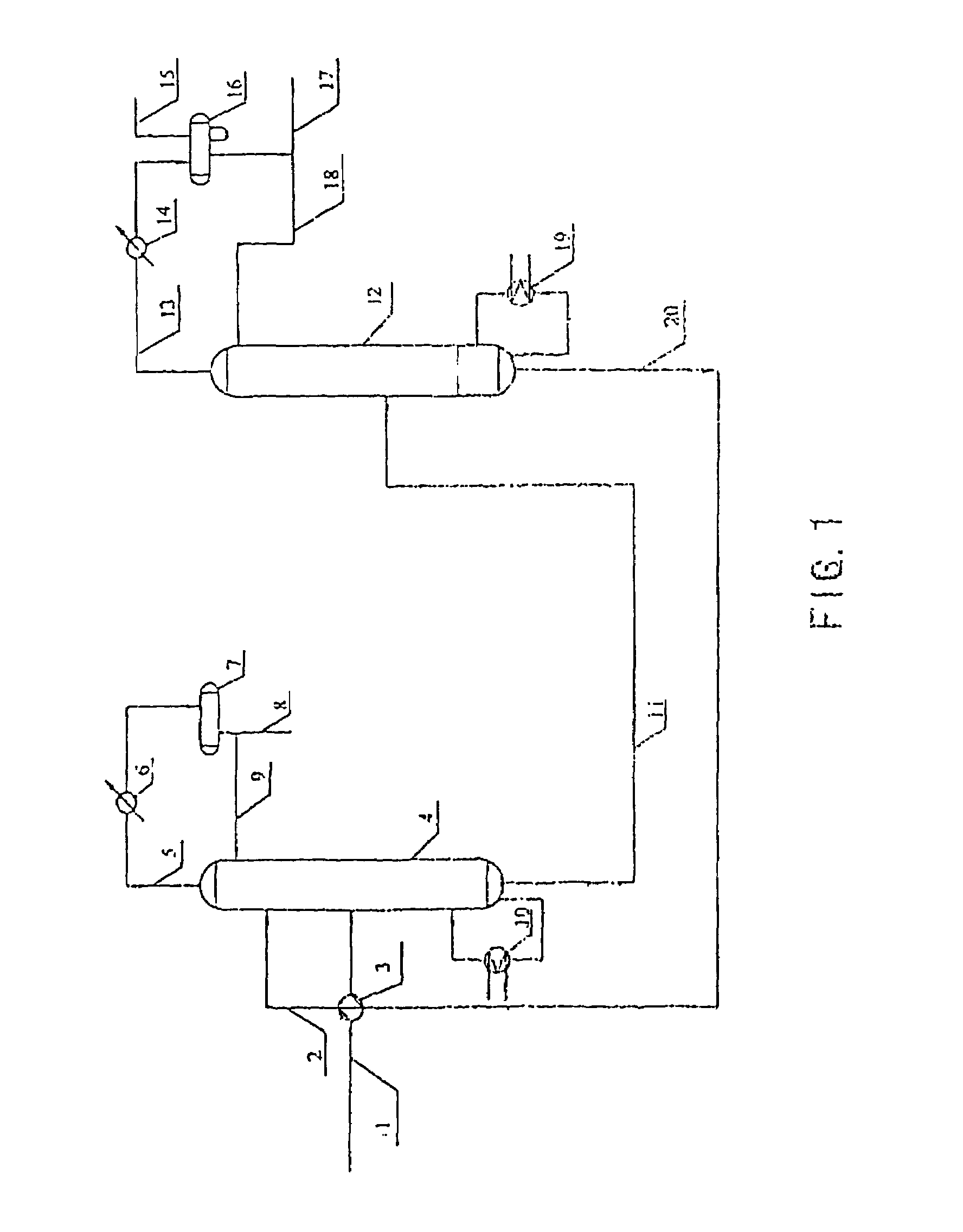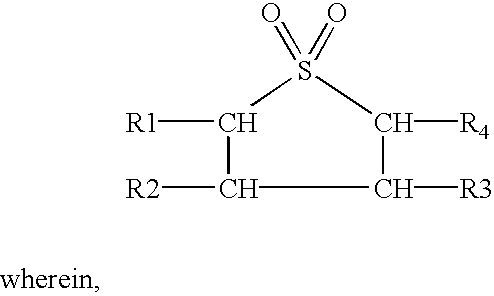Process for separating aromatics by extractive distillation and a composite solvent used therein
a technology of extractive distillation and aromatics, which is applied in the direction of extraction purification/separation, separation process, azeotropic/extractive distillation, etc., can solve the problems of only being able to directly extract the distillate process, unable to achieve further distillation, and only being able to treat the liquid-liquid extraction process, etc., to achieve moderate operation conditions in solvent recovery, wide boiling range, and high solubility
- Summary
- Abstract
- Description
- Claims
- Application Information
AI Technical Summary
Benefits of technology
Problems solved by technology
Method used
Image
Examples
example 1
[0030]Benzene was recovered from the benzene fraction in hydrogenated pyrolysis gasoline. The composition of the feedstock used is shown in Table 2. The composite solvent used consisted of sulfolane as the main solvent, o-xylene and isopropyl benzene as the solutizers, and N-formyl morpholine as the modifier. The contents of various components in the composite solvent are shown in Table 1. The process in FIG. 1 was used. The operation conditions of the extractive distillation column and the solvent recovery column are shown in Table 3. The results on the aromatic separation are shown in Table 4.
example 2
[0031]A benzene product was recovered from C6 fraction of reformed oil through the process flow in FIG. 1. The main solvent of the composite solvent was sulfolane, the solutizers were o-xylene and isopropyl benzene, and the modifier was N-methyl pyrrolidone. The composition of the composite solvent is shown in Table 1. The composition of the feedstock is shown in Table 2. The operation condition of the extractive column and the solvent recovery column are shown in Table 3. The results of the aromatic separation are shown in Table 4.
[0032]Tables 3 and 4 show that the extractive distillation of the reformed oil with lower aromatic content using the composite solvent according to the present invention can not only be steadily operated and controlled under mild conditions but also produce the benzene product having a purity of 99.99%, and a sulfur content of 0.2 ppm with a high recovery rate of 99.6%. The content of aromatics in the raffinate was as low as 0.32%.
example 3
[0033]Benzene was recovered from the benzene fraction in hydrogenated pyrolysis gasoline. The applied feedstock and operation conditions were similar to those in Example 1; except that the main solvent in the composite solvent was sulfolane, the solutizers were o-xylene and isopropyl benzene, and no modifier was added. The composition of the composite solvent is shown in Table 1. The results on the aromatic separation are shown in Table 4.
PUM
| Property | Measurement | Unit |
|---|---|---|
| wt % | aaaaa | aaaaa |
| temperature | aaaaa | aaaaa |
| temperature | aaaaa | aaaaa |
Abstract
Description
Claims
Application Information
 Login to View More
Login to View More - R&D
- Intellectual Property
- Life Sciences
- Materials
- Tech Scout
- Unparalleled Data Quality
- Higher Quality Content
- 60% Fewer Hallucinations
Browse by: Latest US Patents, China's latest patents, Technical Efficacy Thesaurus, Application Domain, Technology Topic, Popular Technical Reports.
© 2025 PatSnap. All rights reserved.Legal|Privacy policy|Modern Slavery Act Transparency Statement|Sitemap|About US| Contact US: help@patsnap.com



